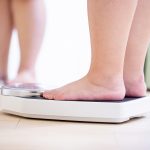
Nurses, health technicians and health care support workers face a higher risk of suicide than the general U.S. population does, an alarming new study shows. Researchers pointed out these workers have to perform stressful tasks while caring for ill patients and managing heavy workloads, with little control over patient outcomes. Not only that, but “health care workers’ relationship roles are often characterized as having a kind of a high achievement and a perfectionistic or compulsive personality traits that can make them excessively devoted to their work and have trouble taking time off,” said study first author Dr. Mark Olfson, a professor in Columbia University’s Department of Psychiatry. “And all of this can contribute to poor self-care and delay them recognizing a need for help. There’s also a lot of stigma that continues just around mental health care.” The study, published Sept. 26 in the Journal of the American Medical Association,, looked at a nationally representative group of more than 1.8 million adults ages 26 and older in data that spanned from 2008 through 2019. Health care workers were divided into six groups — physicians, registered nurses, other health care-diagnosing or treating practitioners, health technicians, health care support workers, and social/behavioral health workers — and compared them with non-health care workers. Analysis of the data showed that health care support workers, registered nurses and health technicians… read on > read on >


























-300x200.jpg)










